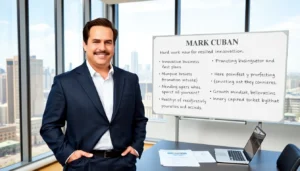Ever wondered how MasterClass transformed the way we learn from the world’s best? It’s almost like attending a dinner party where every guest just happens to be a celebrity in their field. From cooking to acting, the strategy they employ is as captivating as the content they deliver. Let’s jump into the dazzling depths of the MasterClass business model, it’s not just a platform, it’s a revolution.
Table of Contents
ToggleOverview of the Masterclass Business Model

The MasterClass business model stands out in a crowded digital learning landscape. Unlike traditional platforms, it focuses on high-quality content delivered by preeminent experts. This approach cultivates an immersive experience, appealing to learners’ aspirations rather than just their academic needs. By offering courses across various disciplines, everything from culinary arts with Gordon Ramsay to filmmaking with Martin Scorsese, it provides an enticing array that draws in a broad audience. This specialization balances expertise and brand prestige, creating a premium feel that sets it apart.
Key Features of the Masterclass Business Model
Several defining features encapsulate the MasterClass experience. First is the star power: each class is taught by individuals who are icons in their fields. This lends instant credibility to the courses. Then, there’s the sleek, high-production value of each lesson. Cinematic visuals and engaging storytelling keep audiences captivated throughout. Also, the model promotes a subscription service, granting access to all classes for a flat annual fee. This structure reflects an innovative shift from per-course pricing, making it easier for users to explore diverse topics without very costly.
Target Audience and Market Positioning
Splitting the audience into clear segments is crucial for the MasterClass model. It primarily targets aspiring professionals and life-long learners who crave knowledge from the best. This group values personal development, artistic exploration, and reputable instruction. Also, MasterClass positions itself as a luxury rather than a necessity. By fostering an image of exclusivity, it appeals to individuals seeking a premium learning experience, something akin to gaining VIP access to Hollywood’s elite secrets.
Revenue Streams and Pricing Strategies
MasterClass generates revenue through various channels, primarily its subscription model. By offering an annual fee for unlimited access, it cultivates a steady income source while also enhancing user engagement. Premium partnerships with corporations and educational institutions broaden their reach and bolster credibility. Besides, occasional trial offers entice new customers, encouraging sign-ups without initial commitment. These pricing strategies combine simplicity with allure, attracting a sizable customer base eager for expert insights.
Content Creation and Course Development
Creating an engaging course requires meticulous planning and execution. MasterClass starts by identifying thought leaders and industry pioneers, ensuring that the content reflects authentic experiences. After securing talent, they invest heavily in production quality, filming each course in aesthetically pleasing locations. The curriculum is designed to blend theory with practical applications, keeping learners motivated. Also, they incorporate user feedback to refine courses continuously, ensuring they meet learner expectations.
Marketing Strategies for Success
Marketing the MasterClass model hinges on strategic storytelling. Its promotional campaigns often feature trailers that highlight course content, using clips that incite excitement. Social media plays a pivotal role in this ecosystem, with platforms like Instagram and YouTube showcasing snippets from classes to engage potential students. Collaborating with influencers who resonate with target demographics also enhances brand visibility. Eventually, this multi-faceted approach reinforces brand loyalty and encourages word-of-mouth marketing.
Challenges and Opportunities in the Masterclass Business Model
While the MasterClass business model boasts several strengths, it faces its share of obstacles. Competition from other online learning platforms is fierce, especially as cheaper alternatives emerge. Also, keeping content fresh is crucial for retaining subscribers. But, challenges usher in opportunities, leveraging existing partnerships to create exclusive content could differentiate the brand further. Expanding into new areas, like interactive learning modules, may attract a wider audience and sustain their growth trajectory.



